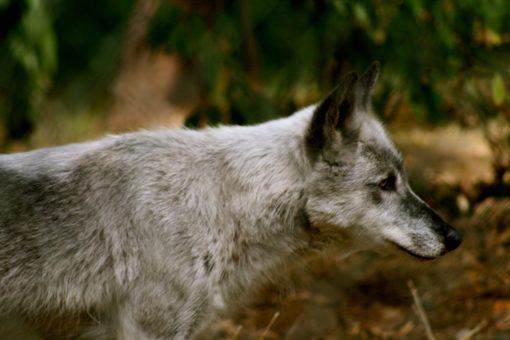
Gray Wolf. Photo: Jeffrey St. Clair.
There is no more relevant time in the yearly cycle of life for humans than Xmas to talk about stress, what it is and what it means for not only people, but all the animals that most people value so highly!
Stress is the product of social and environmental factors in the lives of people and animals; in the case of humans, more so than other animals, they are complicated and aggravated by personal behavior and choices made.
People have always know that when a situation is not “right” they feel uneasy, anxious, uncomfortable, they worry, they make mistakes, other aspects of their life don’t progress “normally”, they lose their appetite, they get ill; the list is extensive!
Consequences of stress include the unseen like physiological and nutritional events, and they play out with health and wellbeing impacts, even slow, and sometimes abrupt, death.
It wasn’t until 1956 that Hans Selye, a brilliant medical doctor and researcher (much of his time spent in Canada, incidentally), first published results of his work, which he titled “The stress of life”, that stress became a public and, eventually a household, word and reality. He is credited with identifying stress as the silent cause of disease and killer of millions of humans.
Think of the consequences of human induced stress on wildlife populations confined to very limited landscapes in winter not only by snow, weather, and lack of forage, but by dramatic loss of space to human encroachment!
Todays wildlife populations survive in contracted landscapes surrounded by humans and their industrial and recreational extravagances (like snowmobiles), a mere remnant of what they were in pre-modern human society. Even these places are routinely invaded by humans in a world where extreme and selfish behavior is not only tolerated but often encouraged.
Why does the stress syndrome even exist? It evolved as a feedback system that allowed wild animals and early humans to sense (determine) that something wasn’t “right” about what they were doing, who they were with or where they were. It provides a valuable early warning signal; get out, change your circumstances! Those who reacted by leaving, or modified their behavior, survived and reproduced; the others, not so. That’s how natural selection works.
Exposure to behavior or situations that cause stress elevate the release of the stress hormone cortisol, the “flight or fight” hormone, with its myriad of physical, physiological and neural adjustments in the body.
I’ve listed above some of the consequences of stress, and when an animal, or a human (animals too) cannot or does not respond to the cause of stress, a significant price will be exacted. In other words, a stress response and it’s occasional engagement; good! Elevated and protracted (chronic) stress = destructive, even deadly!
We know that world wide tens of thousand of human females do not conceive, bear young or produce viable young because of various stress factors. The state of an animals health and behavior play an immense part in successful reproduction; even the inherent capabilities of an animals body – the “biological imperative” – to produce young cannot escape the burdens of stress.
We can only speculate how many wild animals are NOT conceived, not born, or don’t survive because of stress induced complications but it is safe to say the consequences for wildlife conservation are very real.
Chronic stress did not happen to early humans in villages with 200 or so people but the industrial revolution, corporations, and work-for-someone-else agenda with an abiotic schedule – pow! Stress escalated! In todays world – the one some people like to call the “advanced world” – too many humans, like their wild animal counterparts, cant or don’t know how to “escape” either!
When we examine our government and civil service wildlife and habitat management actions, their reasoning, and their mindset, we are struck by the blaring absence of this critical issue. It is a deliberately evasive, a surreptitious form of deception; wildlife and habitat managers have not been honest; they have not confronted human induced stress as a major reality in wildlife conservation or management.
If they did, and this happens also to explain why they do not, the industrial, agricultural, and industrial recreation free-for-all we see crippling ecological function on public land would be seen as the silent monster it is.
We, the people, voters, taxpayers of British Columbia have every right to demand dramatic changes to curb entrenched public land and wildlife mismanagement. But it’s obvious too, we’ll have to fight for reform every inch of the way!